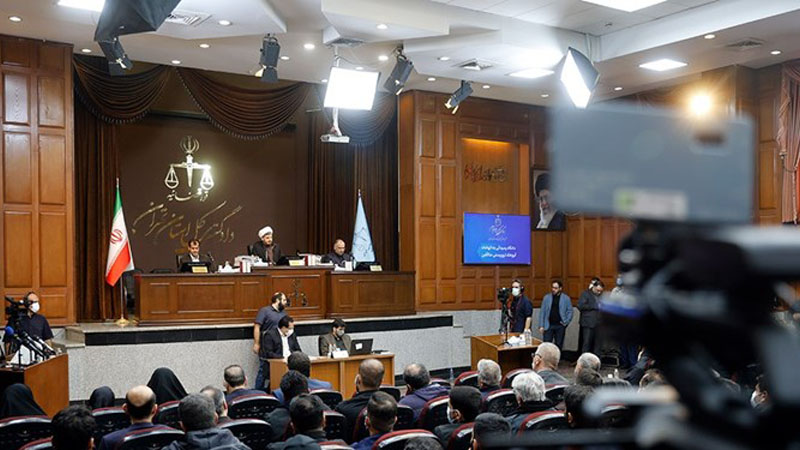A compromise between witnesses, plaintiffs, researchers, prosecutor’s representative and plaintiffs’ lawyers
After twelve sessions of the trial of the leaders of the Mujaheidn-e Khalq (MEK) in Criminal Court No. 1 of Tehran, the thirteenth session of the court will be held soon. During the previous sessions, indictments were presented for the MEK as a legal entity and 114 defendants, all of whom are high-ranking members of the organization. Statements of some eyewitnesses, families of victims of MEK-led terrorist attacks and former members of the organization were heard.
In the twelfth session, the intellectual foundations of the MEK and in particular Masoud Rajavi were discussed. In this regard, the plaintiffs’ lawyer, Meisam Hakimzadeh Hosseini, cited some documents, books and opinions of researchers. In fact, the previous session was an opportunity to investigate the real identity and main ideology of the MEK, which ultimately led to the violent and sectarian activities of the group.
Whatever the intellectual foundations of the MEK have been, today it has created a record for the group, from which a 700-page indictment has been issued, as well as a huge number of plaintiffs, some of whom are always present at court hearings.
Perhaps the testimony of eyewitnesses of the violence of the MEK is more fruitful than historical evidence and ideological foundations, for the court in order to reach the truth and issue fair verdicts. Because the number of eyewitnesses who have witnessed the crimes of MEK in different areas is so large that it can facilitate the clarification of the dimensions of the case.
One of the reactions of the MEK to the holding of the courts in Iran is to purify their past. For example, producing various contents, the agents of the group try to deny its relationship with the Iraqi dictatorship. The cooperation of the MEK with Saddam Hussein and his Baath regime is described as “collaboration with the enemy at war with the homeland” and in many countries of the world the sentence issued for this treason is the most severe punishment in the country’s judiciary because it “endangers national security”. In this regard, in addition to the videos, photos and documents that were revealed after the overthrow of Saddam Hussein’s regime, there are also many eyewitnesses.
The presence of Ali Ekrami, a former member of the MEK, in the previous session of the court is a positive step in enriching the documents and evidence about the betrayal of the group to its homeland (Iran), which was at war with the aggressor (Iraq) for eight years. Ali Ekrami, as one of the officials of the forign relations department of MEK, is not only an informed source, but also a witness to many crimes of the Cult of Rajavi, which is undeniable.
The number of former members of the MEK who are willing to testify about the violence of this terrorist cult in court is not low. These people have a great capacity to improve the process of awareness and enlightenment in the court. While Safaedin Tabarayan rightly spoke about the role of the MEKin suppressing the Iraqi Shia intifada uprising, there are many former members of the group who took part in the operations against Iraqi Kurds and Shiits. These people have written dozens of books and articles about that era, which can be presented in court sessions. Maryam Rajavi’s famous statement in the Morvarid Kurd killing operation came from this evidence: “Take the Kurds under your tanks! You’re your bullets for Iranian revolutionary guards!”
Sedaghat, the religious expert in the court said that the MEK believe in pragmatism followed by Machiavellianism. In his opinion, the MEK sees Islam as a cover for its belief in Machiavel. Many former members of the Cult of Rajavi citing memories and evidence of prayer, fasting, hijab and Islamic rituals that were compulsory in the group. The MEK leaders prove that Islam is the means in the hands of Masoud and Maryam Rajavi to justify the ends. Therefore, the research, scientific and historical explanations of the researchers and lawyers in the court should be supported by the statements of eyewitnesses and the testimonies of the plaintiffs, to aid the heads of the court reach a fair judgment.
Mazda Parsi


